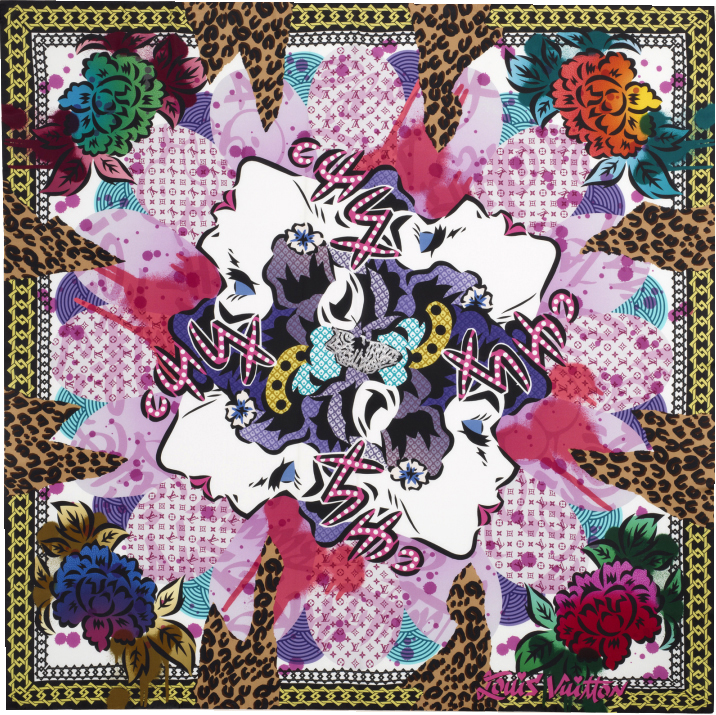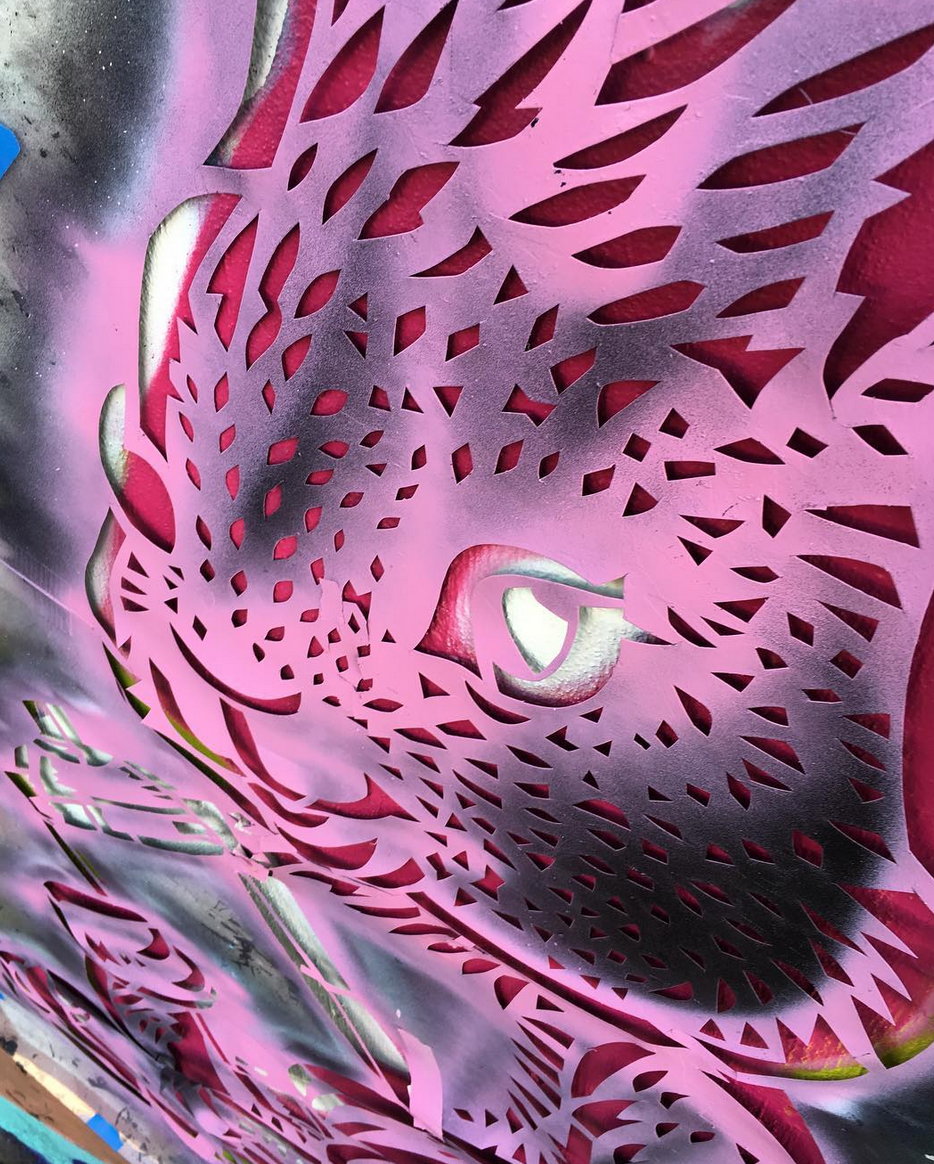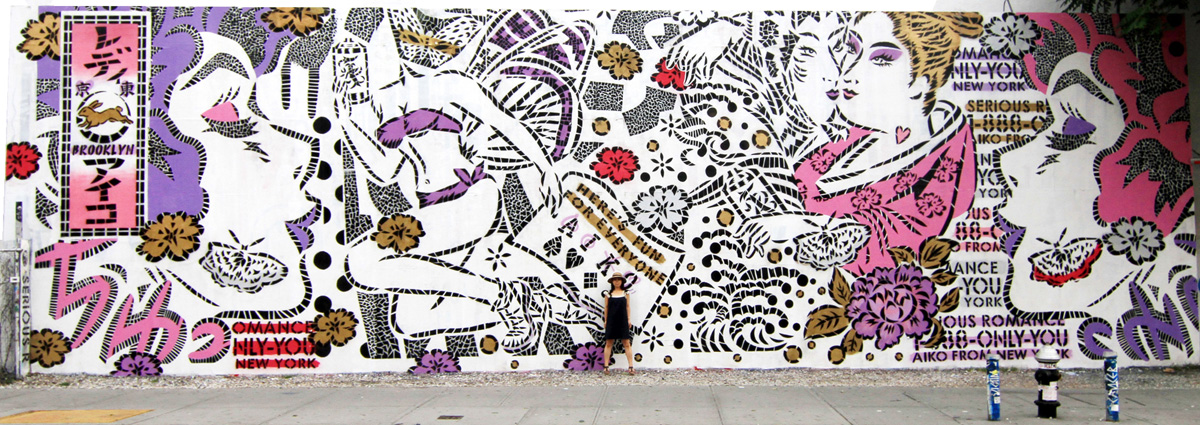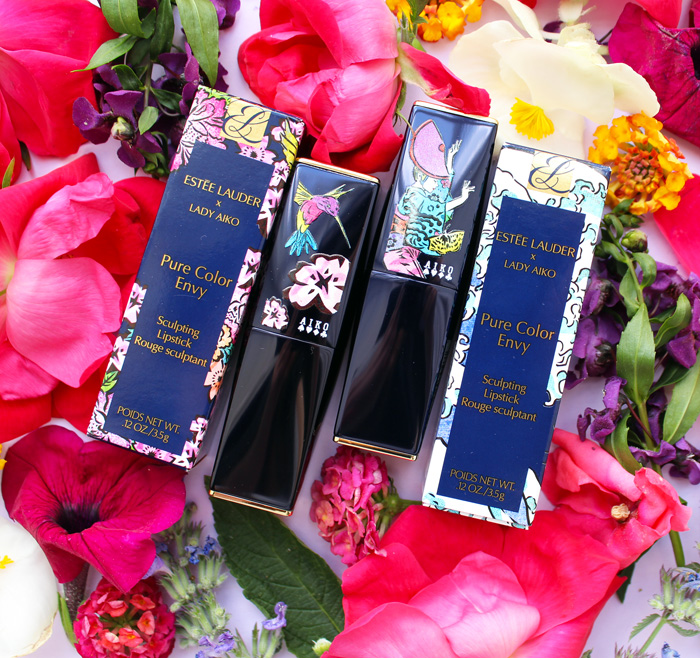May 24, 2021
Still so far behind on artist collabs so bear with me as I try to catch up. Last spring Estée Lauder teamed up with Tokyo-born, New York City-based street artist Lady Aiko for a small collection consisting of two lipsticks and two Micro Essences.
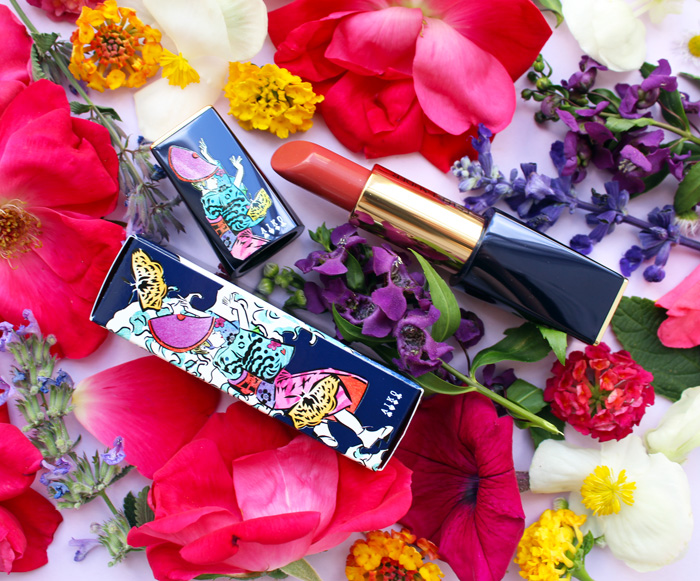
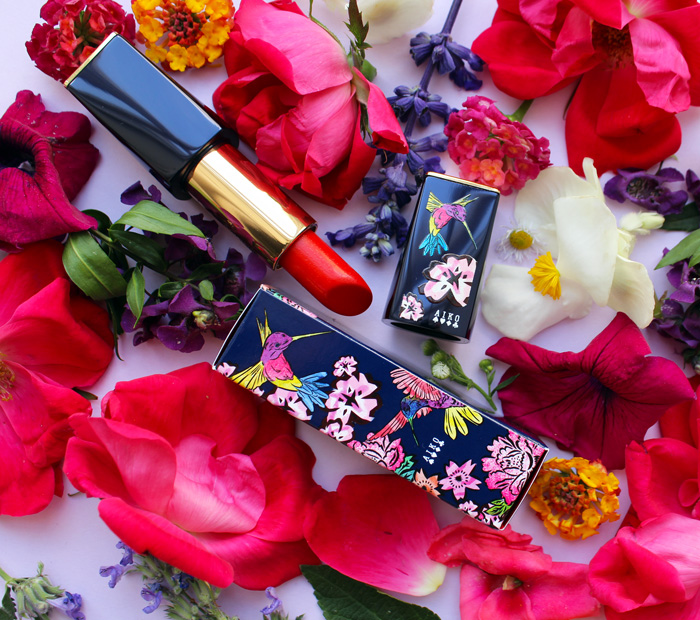
As skincare falls outside the Museum's purview and the Micro Essence is not cheap ($120 a pop) I did not purchase them, but I'm sort of wishing I had even though the designs are the same as on the lipsticks. I feel they can be seen a little better on the bottles than the lipsticks.
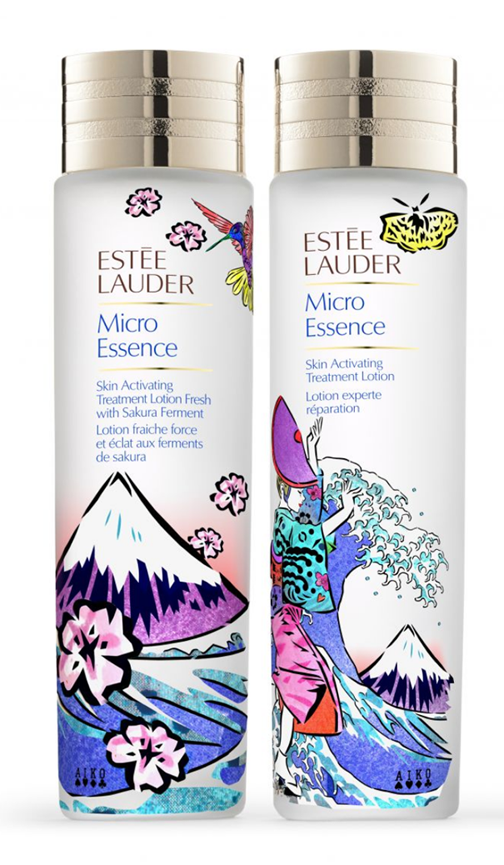
(image from sg.asiatatler.com)
Lady Aiko (Aiko Nakagawa) was born and raised in the bustling Shinjuku area of Tokyo. She was always creating – whether drawings or collages – and also enjoyed painting with an artist who lived in the neighborhood. "[There] was a painter lady who lived on the corner and my mother supported her as an art tutor. So when I was five years old I used to go to her studio and paint with her a lot. That was my favorite thing to do when I was young," she says.
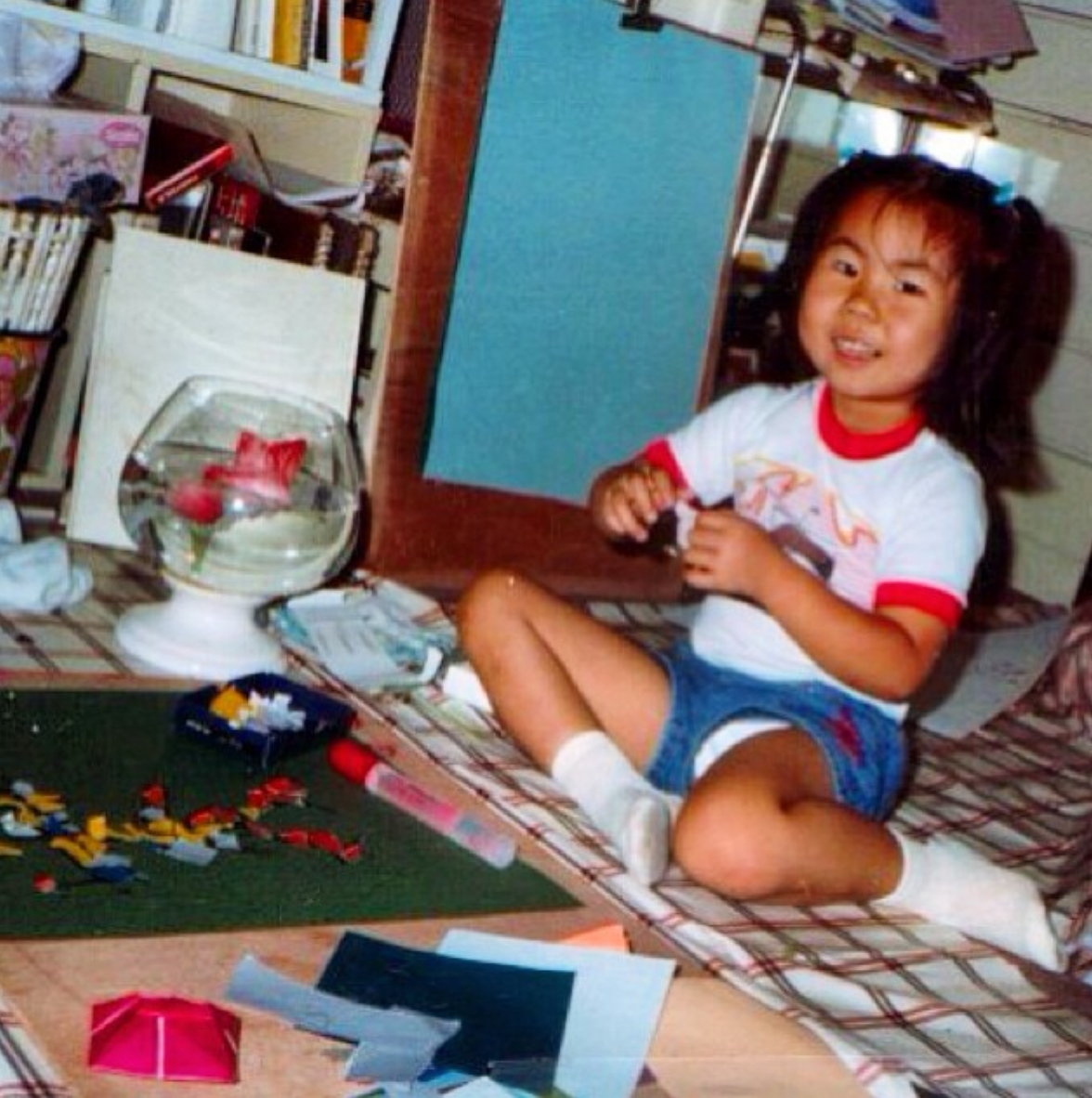
The artist at age 5.
Upon moving to New York City in 1997, she began working for the legendary Takashi Murakami. Aiko knew very little English, and while the Internet existed people weren't connecting online the way they do now. It was Murakami's signature happy flower posted on a flyer that helped get her start. "I found an advertisement in a Japanese supermarket in the East Village. I came to New York alone and I didn’t know anyone, so it was hard to connect with people and it was very expensive to make a phone call to Japan. I was just starting to learn English and I was looking for artist community. So I went into the supermarket and I found an advertisement that said 'Assistant Wanted.' I saw that cute character that Murakami does, and I thought it was something I can try and maybe I can make some friends. So I knocked on the door and said hello. His studio was in Williamsburg, Brooklyn and this was 1998, way before Williamsburg became what Williamsburg is today. I remember it was quite a scary area at that time. The studio itself was very small. It was really intimate before he became a super well known fine artist. I was helping him for about a year and a half, painting and taking care of the studio as he was getting ready for his first solo show, Super Flat, in SoHo. I also documented the production and made a documentary film about the show. It was a small production at this point, but I really liked it because it was the first time I got to see a Japanese artist working in New York City, and it was really inspiring."
Aiko left Murakami's studio after a year and a half and earned an MFA in Media Studies at The New School. Over the next few years she worked as the founding member of an art collective known as FAILE, where the roots of her signature motifs such as butterflies and flowers began to take hold. In 2006 Aiko established herself as Lady Aiko. The first stencil work she intended for street art was an image of a bunny holding a spray paint can, which she had thought of in 2005 during her time with FAILE. "I remember when I was in London, Banksy said he liked it and I should keep doing it, even though no one got it at the time. So I started stenciling the bunny along with some images of sexy girls, and other romantic images. I have been stenciling that image everywhere from Toyko to Shanghai, Instanbul, Berlin, Rome, Amsterdam, Scandinavia and of course throughout the States…Bunny knows all my missions and we have been spreading little smiles to huge wows in every local neighborhood." The bunny has since become possibly Lady Aiko's most recognizable work, gracing everything from Banksy's bathroom door (her very first painted Bunny) to the sides of buildings like this one in Copenhagen.
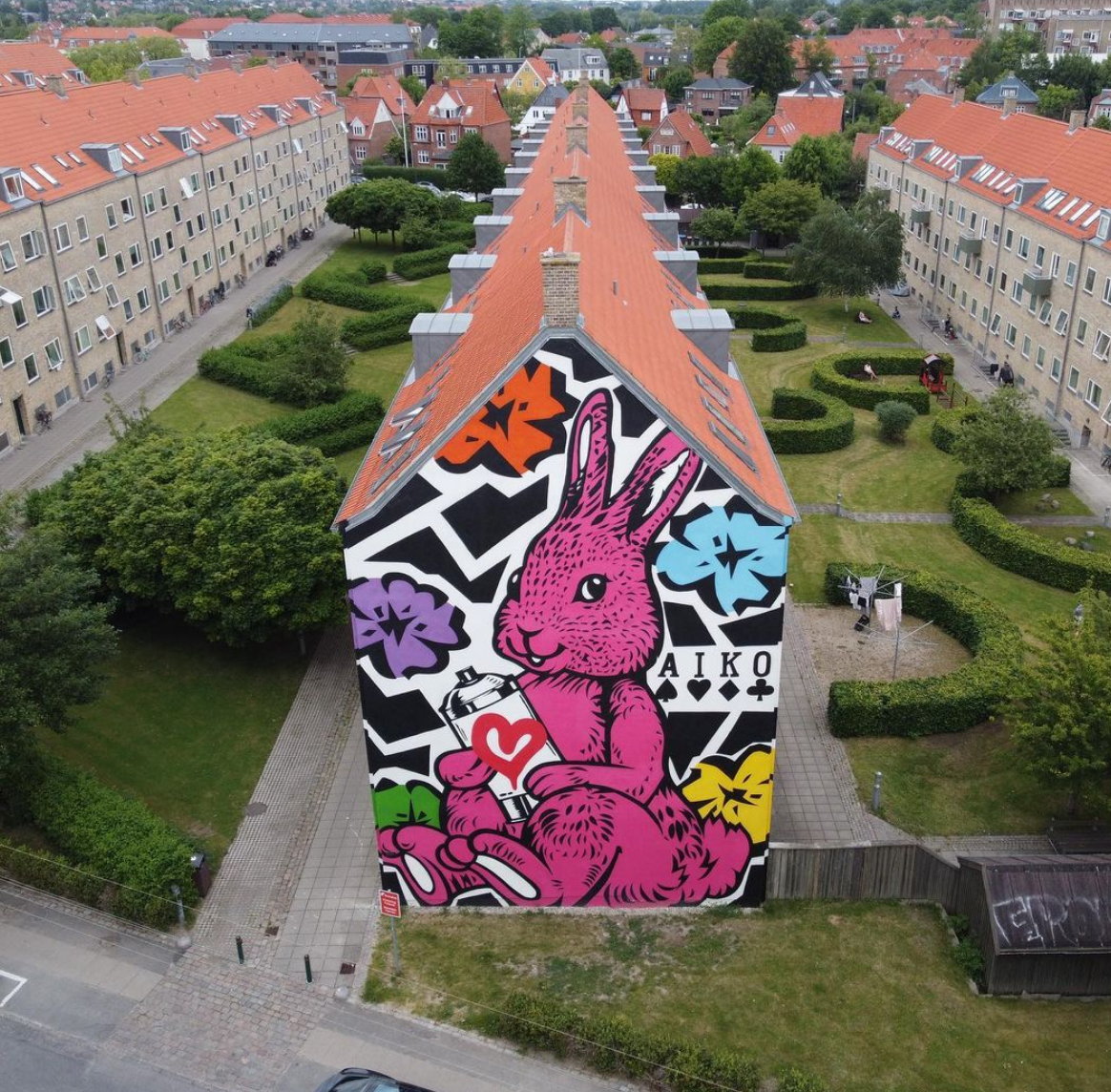 (image from pinterest.com)
(image from pinterest.com)
The image was even turned into its own toy in 2008, just three years after Lady Aiko created it.
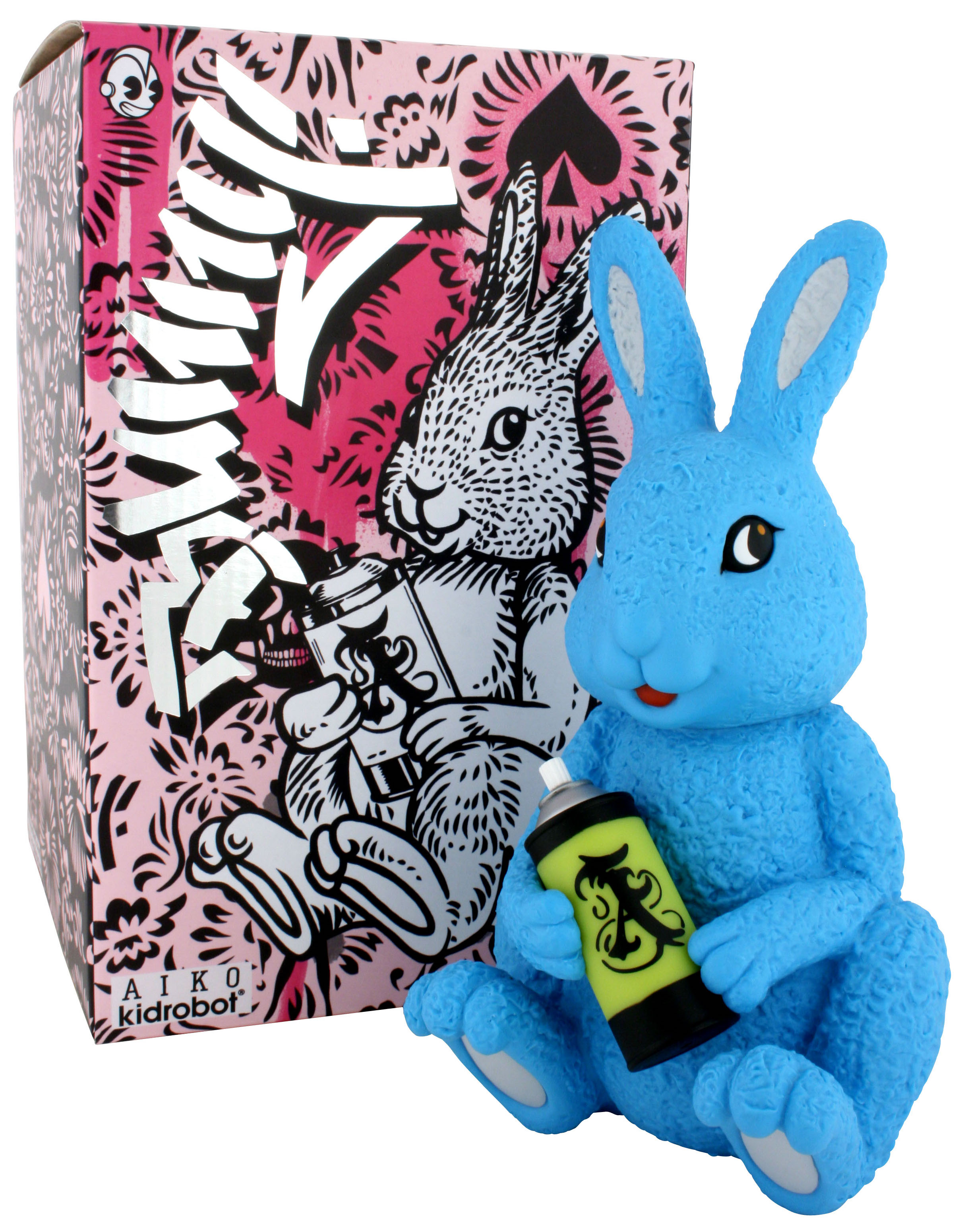
(image from trampt.com)
I also really like the bunny as a Dunny, which was released in 2010. I picked it up because it worked well as a prop and it's adorable. I especially appreciate the "Girls Can Play" slogan on the back.

As Lady Aiko acclimated to New York's urban environment and expanded her artistic skills, she gradually found street art more appealing than working in a studio. "There was another girl who was working at Murakami’s studio, and her boyfriend Cer was a graffiti writer, so he introduced me to graffiti while I was working at the studio…When he came to studio and picked her up, he showed me his sketch books and photographs. That was something new and shocking in a good way. I discovered that there was this group of people that were getting together and going to an underground tunnel, or to somewhere abandoned, just to make some art and have a good time. I was a curious young girl, and I thought that’s something more interesting than sitting in a studio all day and making tedious and detailed artwork for a Japanese artist…I wanted to join them and work on crazy art on the street," she recalls.
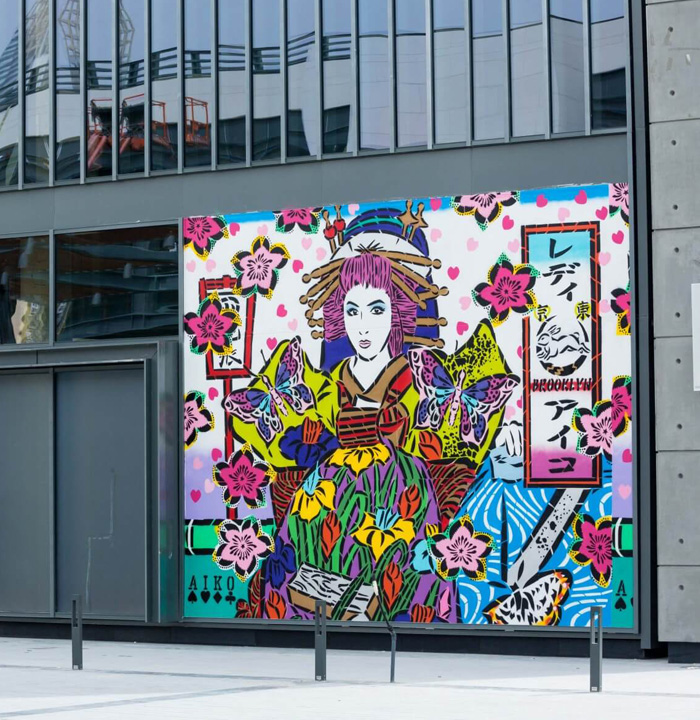
(image from graffitistreet.com)
The democratic nature of street art and relative anonymity it afforded while still being able to connect with others were also attractive to Lady Aiko. "For me, street art was a way to make friends since I didn't have YouTube or Facebook, Instagram. So it's like leaving my hashtag and my art mark on the street…I didn’t know anyone when I moved to New York, I didn’t even speak English, so street art became my language. I met a lot of artists through painting on the street, and we taught each other and grew together. When I started, painting on the street was illegal. I didn’t want to show who I was, at the risk of being arrested, so no one knew I was a woman. No one knew I was Japanese. They only knew me through my painting. I wanted to be a mysterious monster and let the work speak for itself…I think street art is art for everyone. It’s not for the fancy people, it’s for everyone and everyone can see it."
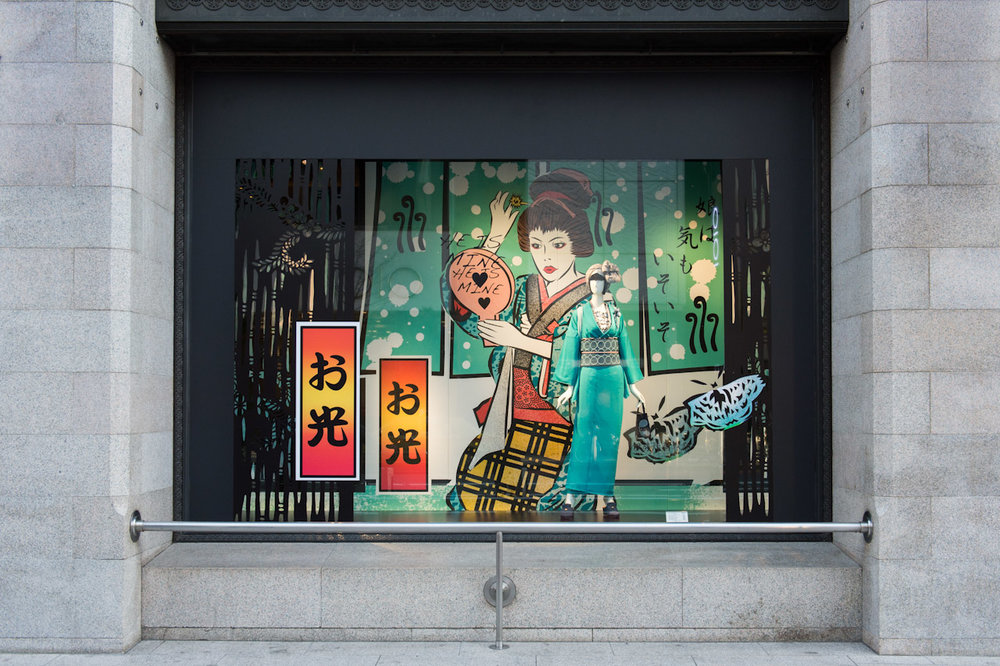
(image from thebeesknees.art)
Unlike most other street artists, Lady Aiko utilizes a stencil technique. While stencils appear fairly simple to make at first glance, the amount of work and time involved in hand-cutting the hundreds of stencils necessary to create a large-scale work is no easy feat. Aiko elaborates on the painstaking process: "You have to spend a lot of time before [you] start painting. I normally cut stencil all by my hand it's like my first stage of the production. For this wall [in Eugene, Oregon], I spent two days cutting stencil and sometimes like I spent like months and months just cutting stencil for a big size wall. And after you cut the stencil I need to carry all the pieces of paper to the site. I need an assistant when I do a large scale mural because the size of [the] stencil is also enormous…there really aren’t a lot of stencil artists out there anymore. Nowadays they do a lot of machine cuts, but I do it all by hand." Whew!
But Lady Aiko actually enjoys the process as well as the physical rigor involved in painting on such a large scale. "I think street art is also like an athletic game for me. Like climbing up the ladder, up and down, and up and down, and carrying buckets of paints. It's like, you know, an athletic game."
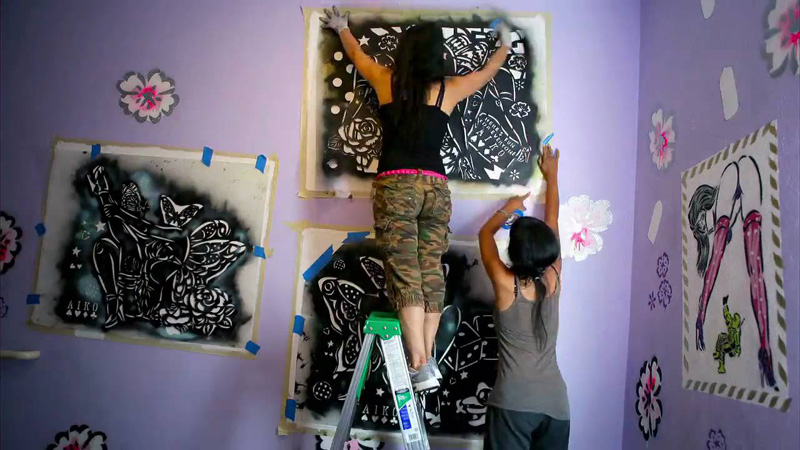
(image from youtube.com)
Stylistically Lady Aiko's work differs from that of Yoon Hyup, the Korean-born street artist/muralist who collaborated on Bobbi Brown's spring 2019 collection, but thematically they are similar in that both pay homage to their cultural heritage, fusing traditional influences from their respective native countries with a modern city's energy. For Lady Aiko, distance from Japan helped her learn about and respect Japanese art and history all the more. "The more I stay away from Japan, the more I appreciate my country, culture, traditions. I’ve started to study more about Japanese heritage, because I discovered it’s interesting and super unique, and I am from there. Especially the art, fashion and culture in the Edo period, which was all invented and created by working class people in old Tokyo, we used to call Edo City. We used to have such great art forms and techniques such as Kabuki, tattoo, calligraphy, kimono textiles, wood block prints. These were amazing skillful art forms invented in 17th century. Hokusai and Utumaro were the original ukiyoe print masters, and I love and respect them as great artists. Printing was not just happening in the Warhol times, it was happening all the way back in my country 200 years ago. I thought 'holy shit! I didn’t realized that my great grandfathers were doing such dope stuff.' I also discovered that old Japanese people used to do graffiti. The Japanese word for graffiti is RakuGaki. Raku means drop and Gaki means draw, so they used to make a drawing or a print, and they used to drop it on the street anonymously so that people would pick it up. It could be more for a political purpose and message, but it sounds like street art and sounds fun. We also used to have beautiful sticker culture, in that same time around the 17th century. It’s called Senjafuda (Thousand Shrine Tags), it’s a piece of tiny paper with a small wood block print. They drew their own symbol, name, crew etc. and they used to carry glue in a small pot and a brush, and when we would go to a temple or shrine once we finished praying we would put their stickers on the ceiling so that our soul will remain in the temple to be protected. That was part of their ritual in the samurai time, but I feel I have that similar kind of ritual when I put my sticker on the street where I have visited and spent some time. Before I left Japan, I was young and ignorant, and I thought it was just normal thing. I couldn’t think that deep. I knew, but I didn’t feel Senjafuda as such a special art form and I wouldn’t search out the origin of RakuGaki. Since then I have spent about 15 years living outside of Japan and working on street art, and I discovered all those beautiful Japanese traditions, but some are disappearing and being forgotten, so now I enjoy talking about it and reflecting it into my art very much." One of the many examples of how Lady Aiko incorporates elements of traditional Japanese art was her mural for her mural for the Japan Society's exhibition "Edo Pop: the Graphic Impact of Japanese Prints" in 2013, which was inspired by Japanese wood block prints (ukiyo-e). A modern stenciled version of Hokusai's The Great Wave functions as a backdrop for a mix of cheerful pop art style flowers and butterflies, as well as a woman with a shunga (Japanese erotic art produced from about 1600-1900) inspired tattoo on her back.
 (image from metropolismag.com)
(image from metropolismag.com)
Speaking about the wall she painted for Eugene, Oregon's 20 x 21 mural project, Lady Aiko further explains some of her iconography. "She's a Maiko, it’s an apprentice of geisha, and she's a trainer to be a dancer. And I chose this motif because it's very young energy around her and really festive…My wall is really tall and skinny so I had a little time to think about the execution. I chose this way to express day and night, like flip the girl, and it’s like a playing card. I like the butterfly. It’s an image of transformation and I feel like not only women, but for everyone, like we have the moment of transformation and I really like to keep painting the image of a butterfly in different countries."
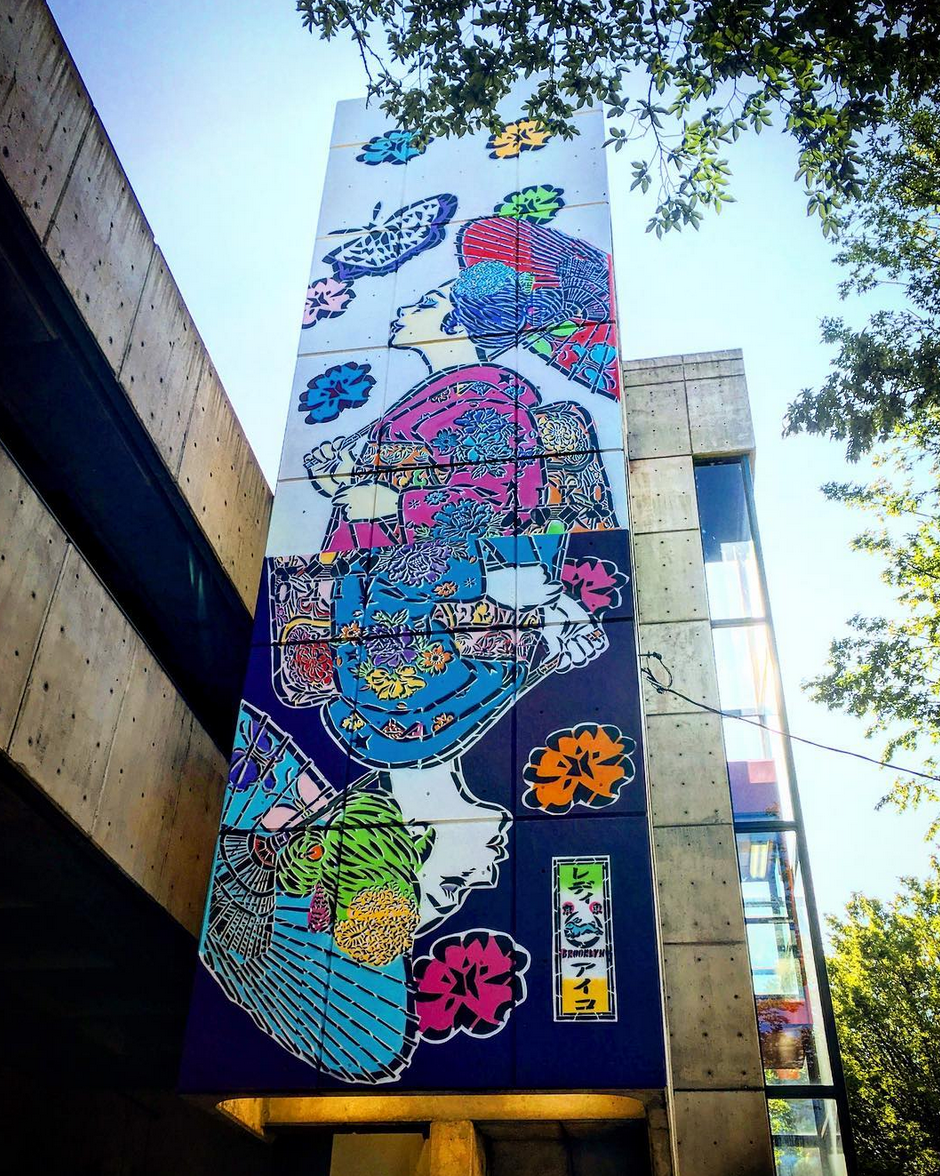 (image from klcc.org)
(image from klcc.org)
The playing card motif has become Lady Aiko's literal signature. The mural she completed for Opening Ceremony in Seattle shows it particularly well.
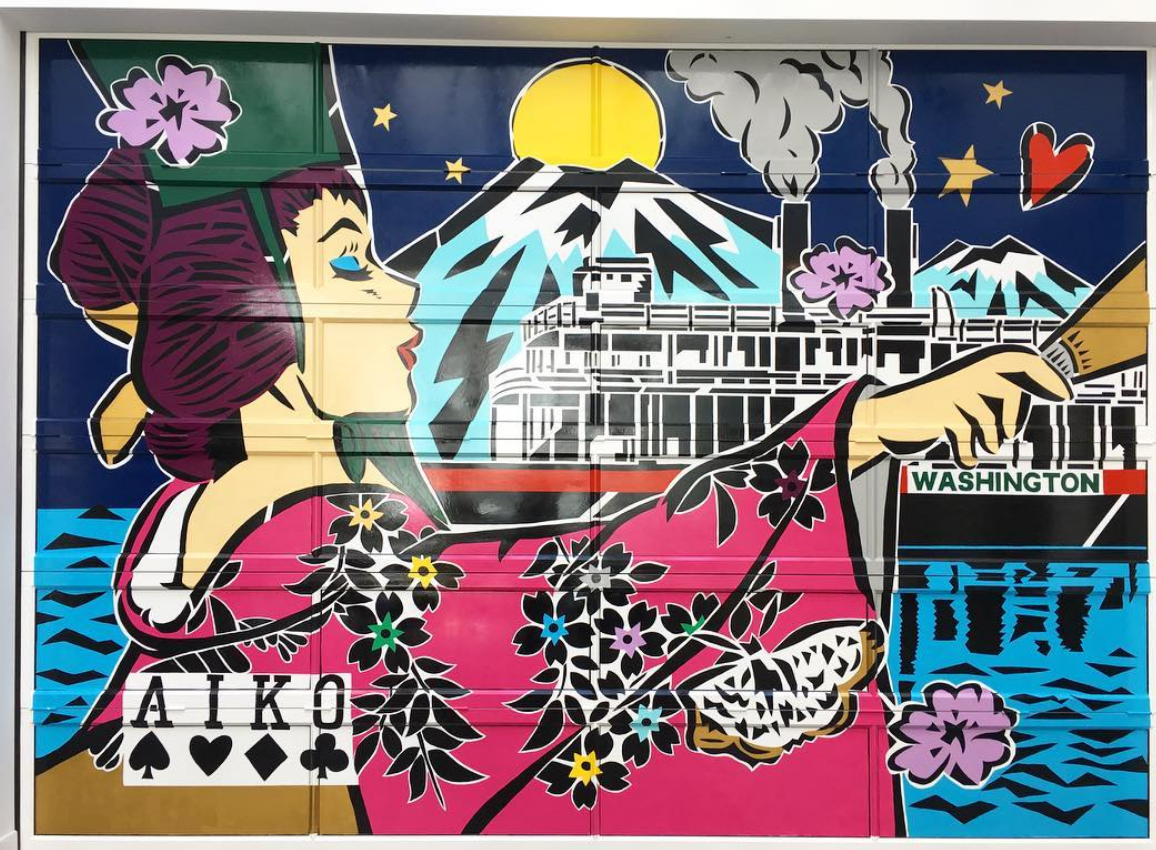
Her style is also inspired by vintage pin-ups, comic books (I'm getting Lichtenstein vibes) and tattoo imagery, which really shine in these gorgeous Coney Art Walls she painted in 2015 and 2017, respectively. Plus, MERMAIDS! I love that she worked in an homage to the famous Coney Island Mermaid Parade.
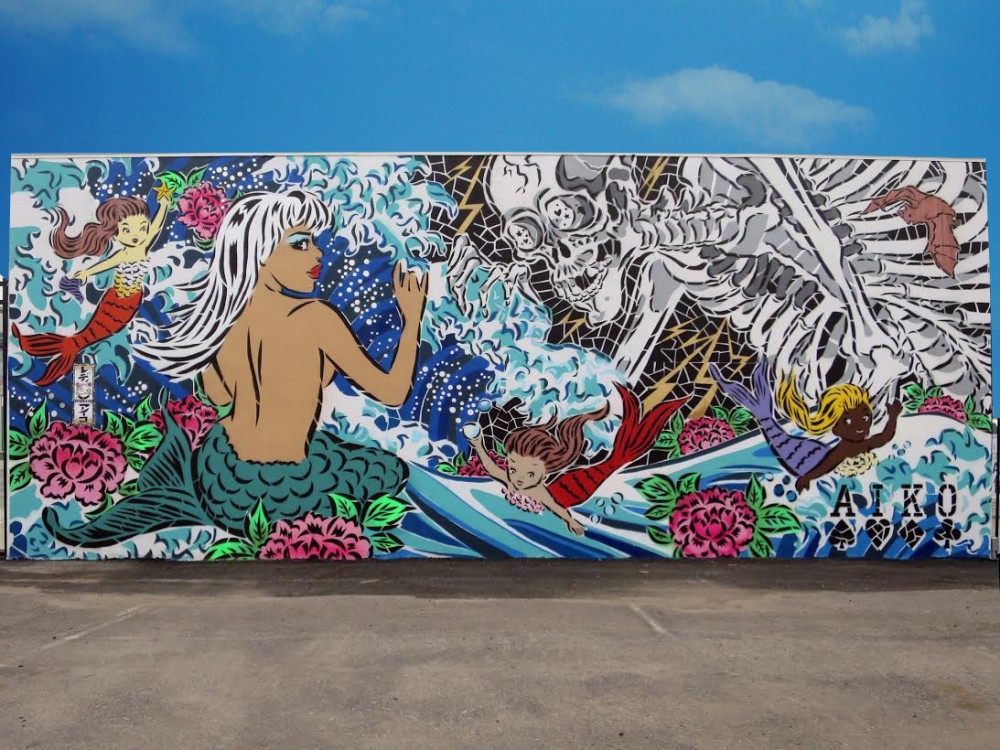
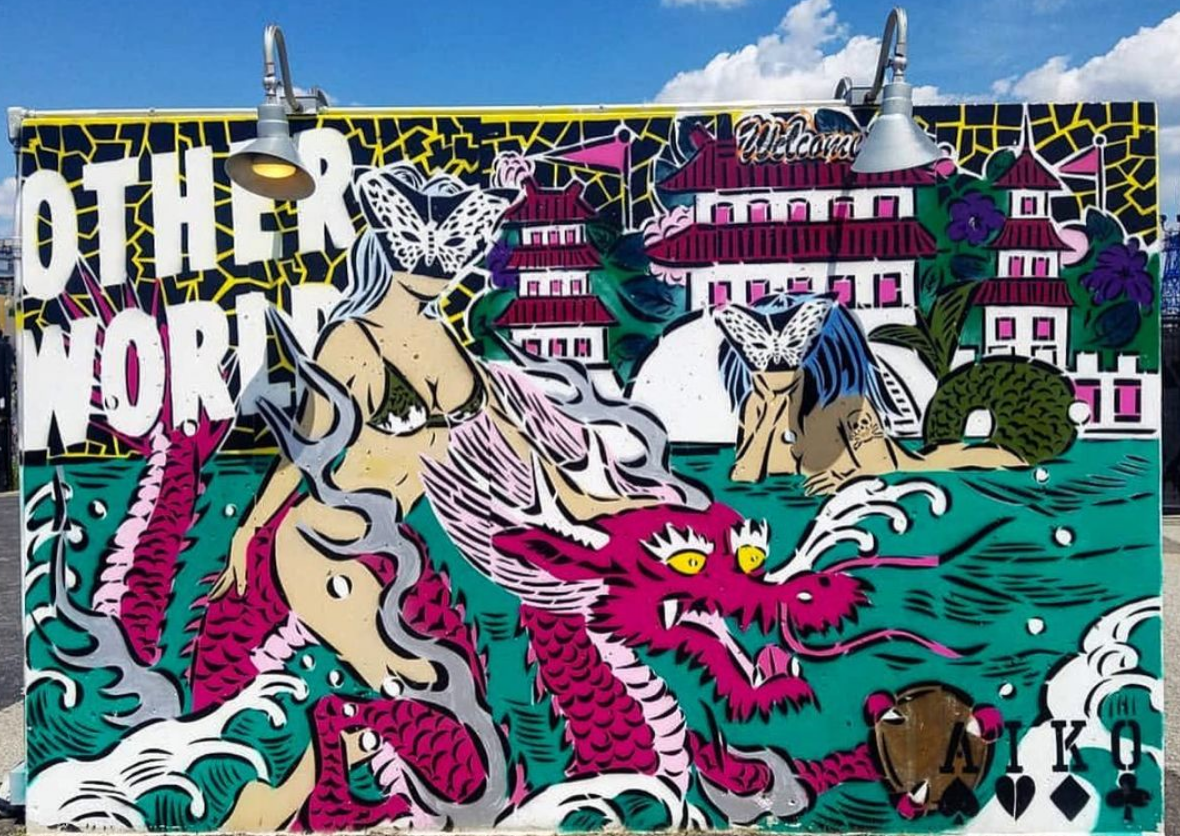 (images from ladyaiko.com)
(images from ladyaiko.com)
Lady Aiko generally maintains an upbeat outlook in her work, trying to spread positivity and beauty. "I love to create images related to romantic momentos, lovers and kisses. My subjects are pretty much always about romantic stories, lovers and sexy girls in everyday life. My name, Aiko — which is the most common Japanese girl’s name — means love. Love has been my theme throughout my entire life, even from early childhood…I enjoy making something that gives us a good feeling, and creating something beautiful that I can share with everyone. Something that is full of love."
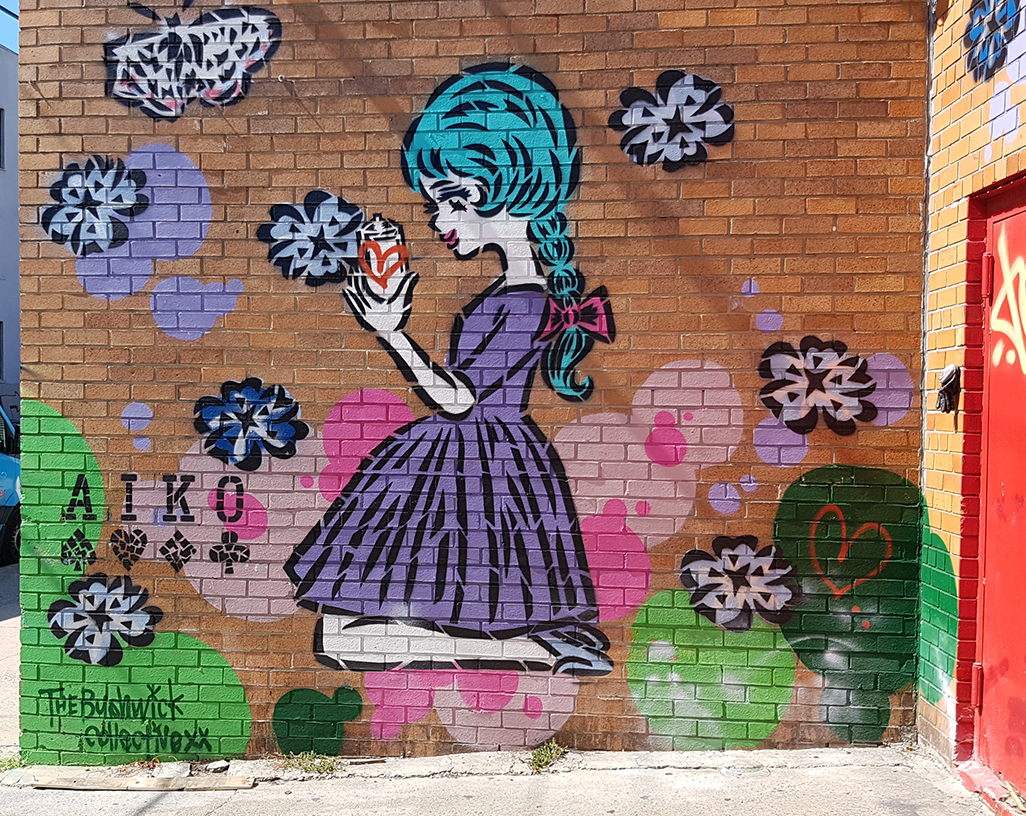 (image from about-street-art.com)
(image from about-street-art.com)
Occasionally Lady Aiko's representations of love delve into decidedly erotic territory, such as the murals for a 2019 show entitled "Beyond the Streets". Creating a red-light district of sorts, Lady Aiko combined shunga with the seediness of '70s era Times Square. But while the images could be interpreted as degrading depictions of sex workers, they were intended as an unabashed celebration of women's sexuality and pleasure. "People used to draw really sexy stuff in my country, so I'm making this whole section sexual and pornographic. But also it's more about women. You see [in the work] more sexual energy from women than men. My red-light district is more about how women want to have good time. We also want to enjoy some sexuality…Guys can paint sexy ladies that they want to fuck but the female figure is ours; it’s also for us to enjoy. It’s nothing against boys; I’m just celebrating female energy."

The painting on the right is a re-imagined version of another Hokusai work, a shunga print from 1814 entitled The Dream of the Fisherman's Wife.
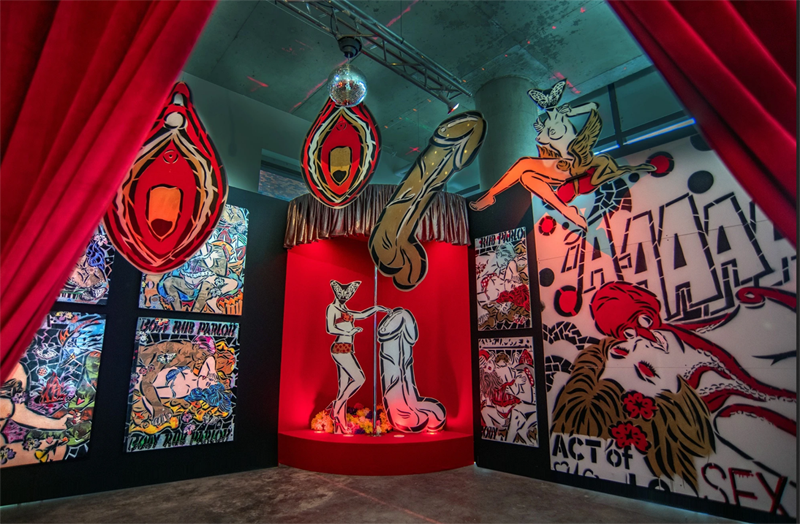 (images from northcountrypublicradio.org and beyondthestreets.com)
(images from northcountrypublicradio.org and beyondthestreets.com)
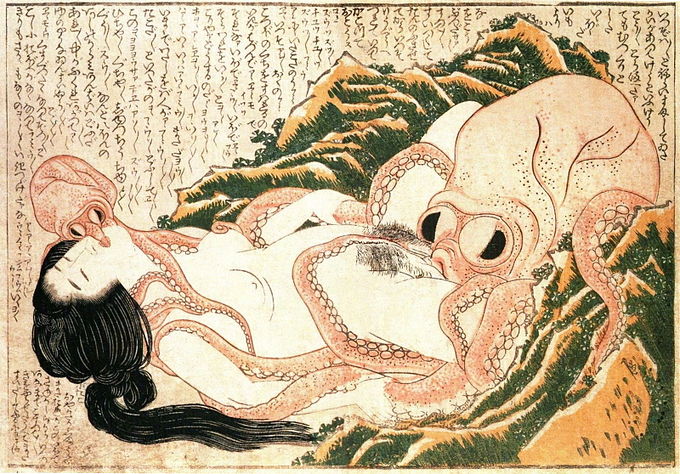
(image from wikipedia.org)
Between the fairly explicit portrayal of women's sexuality in "Beyond the Streets" and her other equally eye-catching, thoughtful work, Lady Aiko has proven herself a critical player in a new generation of street artists who are changing the way graffiti is perceived in the art world. In the eyes of academics, galleries and museums, for many years street art was snobbishly viewed as nothing more than vandalism (in fact, Aiko was arrested early in her career), but now it's being curated by the likes of gallery owner and art dealer Jeffrey Deitch. Over the past 20 years or so, Deitch and others have set up specific (legal) spaces for street artists to compete for a chance to show their work. One such space is Manhattan's Bowery Wall, which Lady Aiko had the honor of being the first woman to paint. After completing Miami's Wynwood Walls in 2009, Lady Aiko set her sights on the coveted Bowery, but felt she "had to let the boys do it first". Finally in 2012 she was awarded the opportunity. "Wynwood Walls was one of the first big walls that was painted by a woman and that got good attention, and people started to know about me and my serious stencil murals. People started to realize that female artists also can paint a big wall."
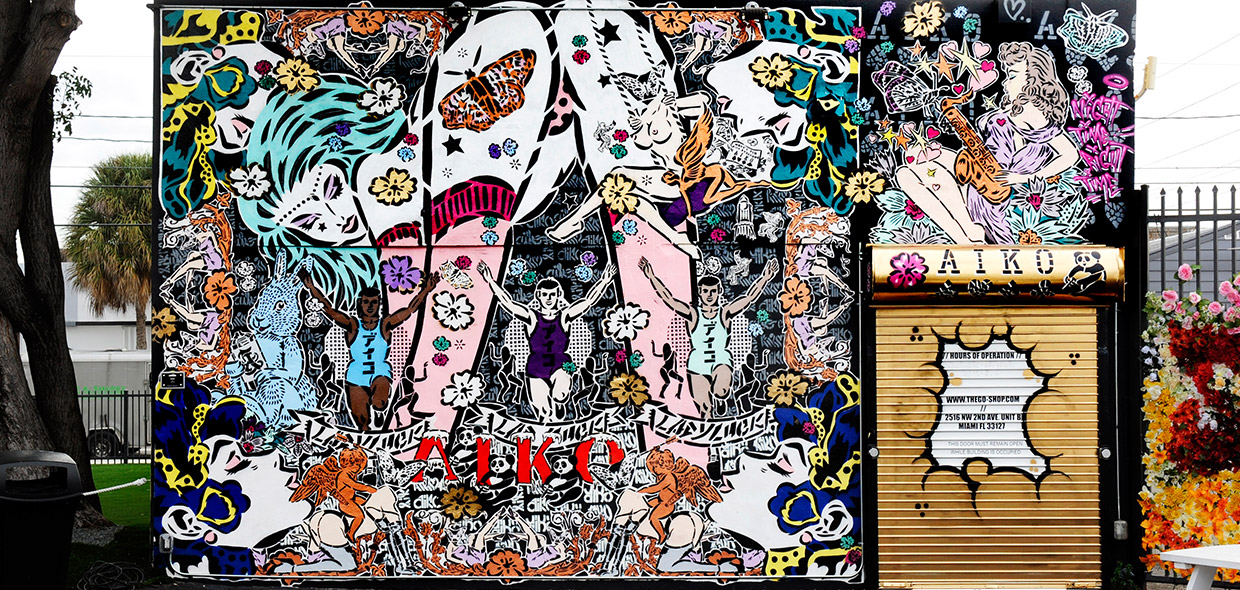
(image from thewynwoodwalls.com)
Lady Aiko recognized the importance of women contributing to the Bowery Wall, inviting others to participate in the process. "It made me think, it must be my time? For years, that wall had always gone to guys. I waited to paint it for three years. I got the call, and I called my girlfriends as I wanted to make it a 'female only' wall! I called five of my good girlfriends, from the girl whose does my nails to Martha Cooper (the legendary photographer). There were loads of people watching and I think they really appreciated the fact that there were all these girls working away, it bought a new vibe to the mural scene. We did the wall, I felt honored." The feeling of camaraderie with fellow women made a lasting impression on Lady Aiko's process. "I was really tired of having it be dudes vs. girls. I think I got traumatized. Now when I do my own big wall I always call my girlfriends first. They care more about mementos and enjoying the process, instead of it being 'my idea is this' or 'my idea is that.' I enjoy the work and enjoy the time together."

